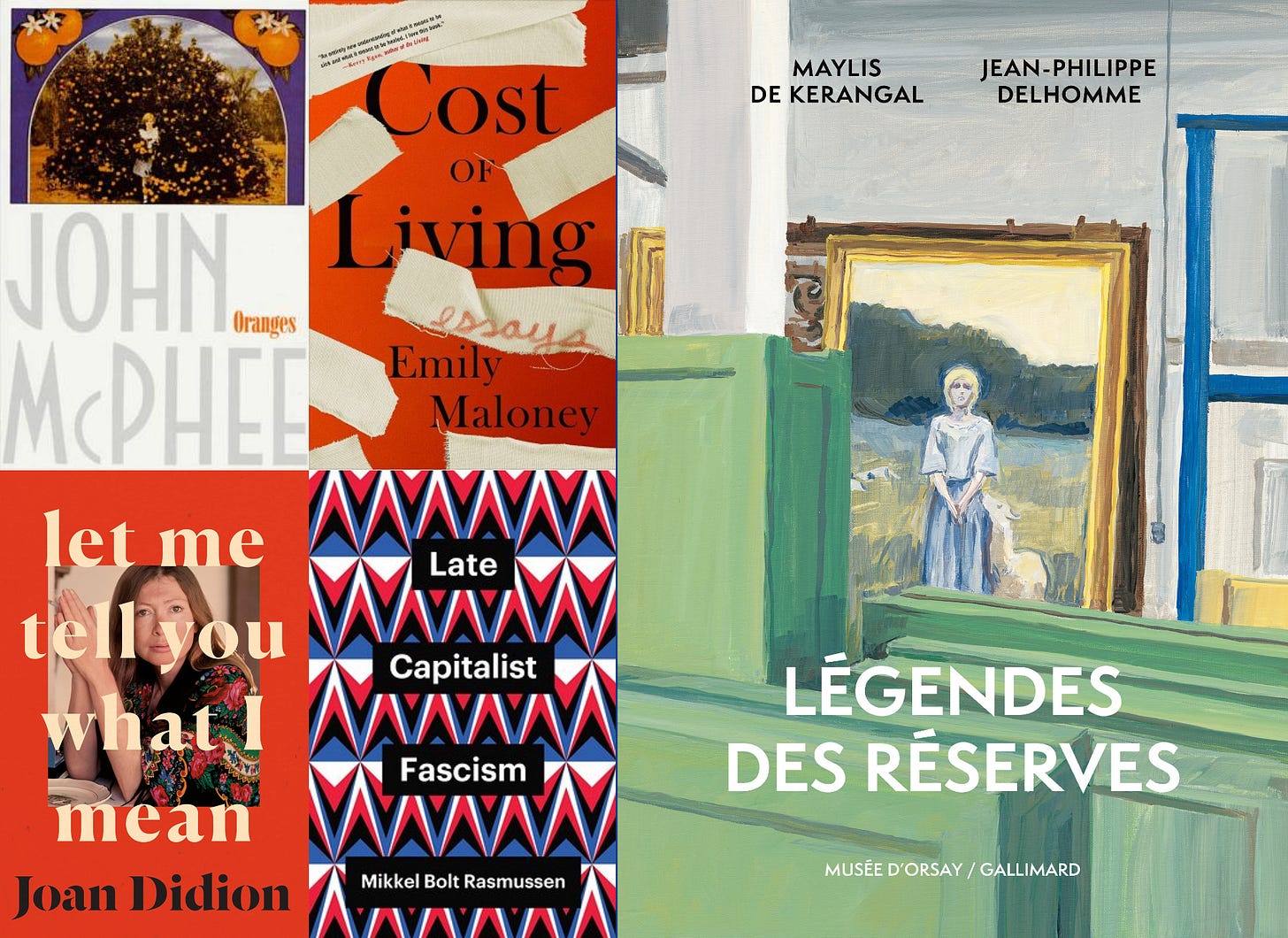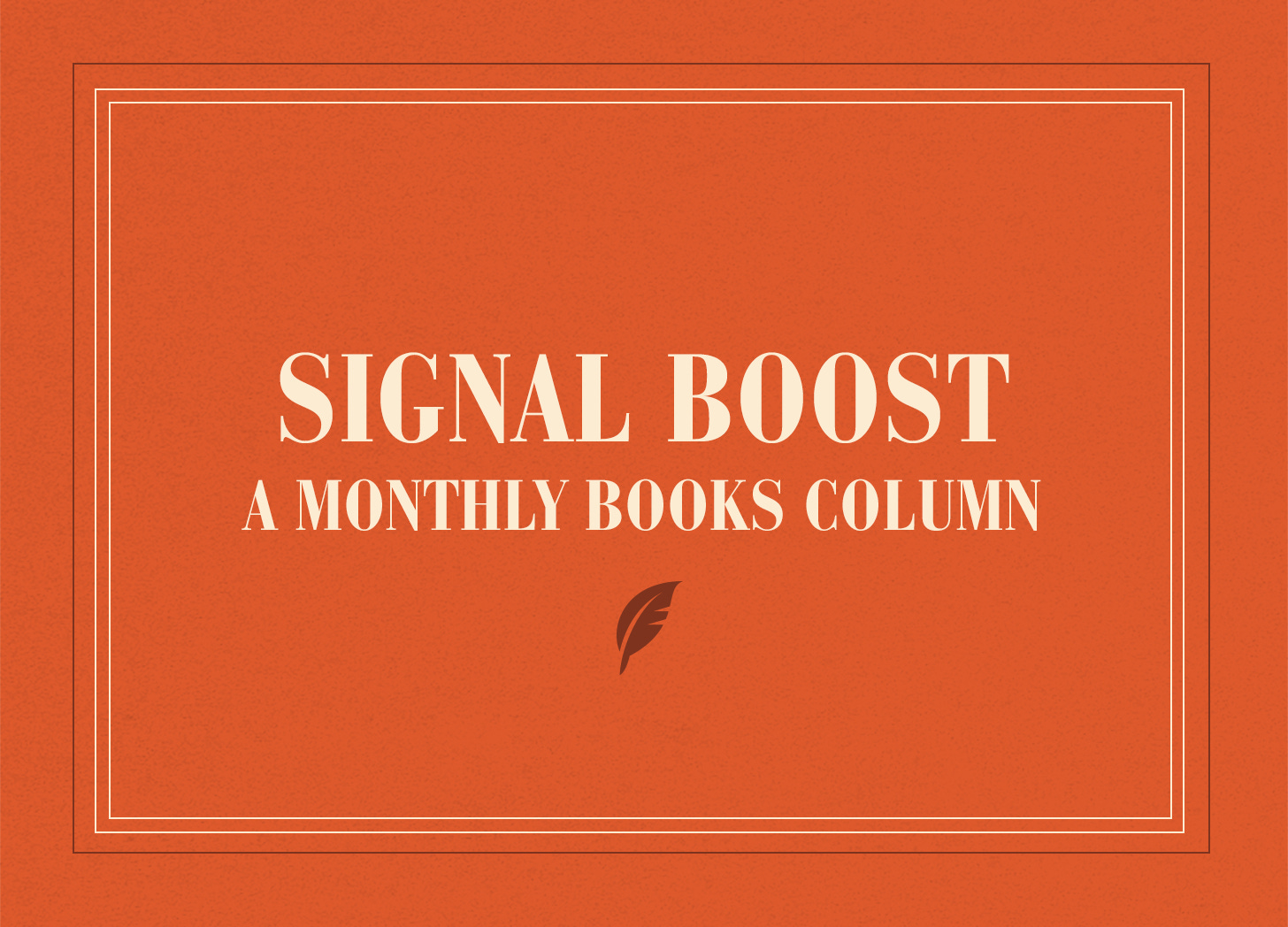10. February Reads
When your TBR pile doesn't fit in a pile. Featuring books from John McPhee, Emily Maloney, Joan Didion (with Hilton Als), Mikkel Bolt Rasmussen, and Jean-Philippe Delhomme (with Maylis De Kerangal.)
Dear friends,
This month’s books column is a little different. I usually look at new titles coming out during a given month, and share favorites that I’ve either read, or am interested in reading. I like to look through the catalogues for independent presses a few months in advance, and spread the word about interesting books that might be getting less attention. I’ll press more popular titles on you too, but really it’s just whatever new releases I’m most excited about. However, due to—*waves around at all of this*—I haven’t had a chance to do that this time. Instead, I thought I’d share with you my IRL TBR pile.
Okay. So, I don’t actually have a TBR pile, singular, but I do have a TBR table.
To be fair, not all the books in these stacks are “to-be-read.” Some are just books I have out because I want to look at them, or if I need to reference them frequently for my work. (And if you’re curious about the woman in the photo in the bottom right hand corner, please see yesterday’s post.)
Right now I’m reading Oranges by John McPhee (Farrar, Straus and Giroux, 1967). Next up I’d like to read Cost of Living: Essays, by Emily Maloney (Henry Holt, February 2022), which I received as an ARC, and Let Me Tell You What I Mean, the new Joan Didion collection with an introduction by Hilton Als (Harper Collins, 2021), that I picked up the other night at Galignani Books along with Late Capitalist Fascism by the Danish art historian and theorist Mikkel Bolt Rasmussen (Polity Books, 2021), and Légendes des Réserves, by Jean-Philippe Delhomme and Maylis de Kerangal (Gallimard, 2021), a book of paintings by Delhomme of works from the Musée d’Orsay while kept in storage.

In case you’re unfamiliar, this classic from McPhee, Oranges, is about exactly what it says on the tin. It’s a great time of year to be reading it, at least in Western Europe, when the markets are flooded with beautiful citrus that you can eat while you read interesting orange facts. For example, did you know that picked oranges are alive, and actually breathe in oxygen constantly until they die? And that you should not eat a “dead” orange? I like micro-histories, and want to write more in that genre myself. Maloney’s Cost of Living, from what I’ve read so far, has very strong writing, not to mention the importance of the subject matter, which is the total, actually psychotic unaffordability of healthcare in America. The new Didion needs no introduction or explanation, and in Rasmussen’s new book, he explores “the diffuse fascism present in social media and daily life.” I’m not familiar with any of his other work, but this looked interesting to me. As for the book of works by Jean-Philippe Delhomme, of paintings within paintings, it’s a beautiful object about beautiful objects, themselves depicting beautiful objects. I like Delhomme’s style quite a bit, and I think this is my favorite work of his to date. Although he’s probably best known for his illustrations in places like The New Yorker and The Paris Review, his other work stretches from thoughtful oil paintings of cityscapes and still lifes, to irreverent comics with the likes of Monet, Gauguin, Van Gogh and Rosa Bonheur posting on Instagram, which is both very silly and very brilliant. This is not a perfect comparison, but he’s sort of like Charles Burchfield meets The Far Side.
I’m flying back to the U.S. tomorrow to visit my dad, and will be away from Paris for a few weeks. During my last transatlantic flight there wasn’t any wifi (how??) so I don’t know how much I can post tomorrow. But we’ll see. The 30-Day notebook challenge will continue uninterrupted.
As always, thank you for reading, and I hope you are having a pleasant week!
This has been Day Ten of my February-March 30-day notebook challenge.
The pitch for becoming a paid subscriber
This is an ad-free space, and all support comes from you. Your subscriptions literally keep the lights on, put tea in my cup and jam on my baguette. All writing costs money to produce in the form of time, food, electricity, a laptop, a roof over my head, my student loans that I’ll be paying off until I die, my health insurance so I don’t wither away, my life-changing jeans, and my haircuts so I don’t look like Hairy Mary Magdalene. It’s how I afford books and newspapers and literary magazines and museum passes and sketchbooks and pencils and brushes and of course, notebooks.
However I know what it’s like not to be able to afford even a few dollars a month. For that reason I also offer student discounts and free subscriptions—just email and say what you need, I’m happy to oblige, no questions asked.
If on the other hand you’d like to sponsor a student or other lower-income reader, you can do so by donating a subscription here.





Safe flight! Hope your Dad is doing well. Which book goes with you on the plane?